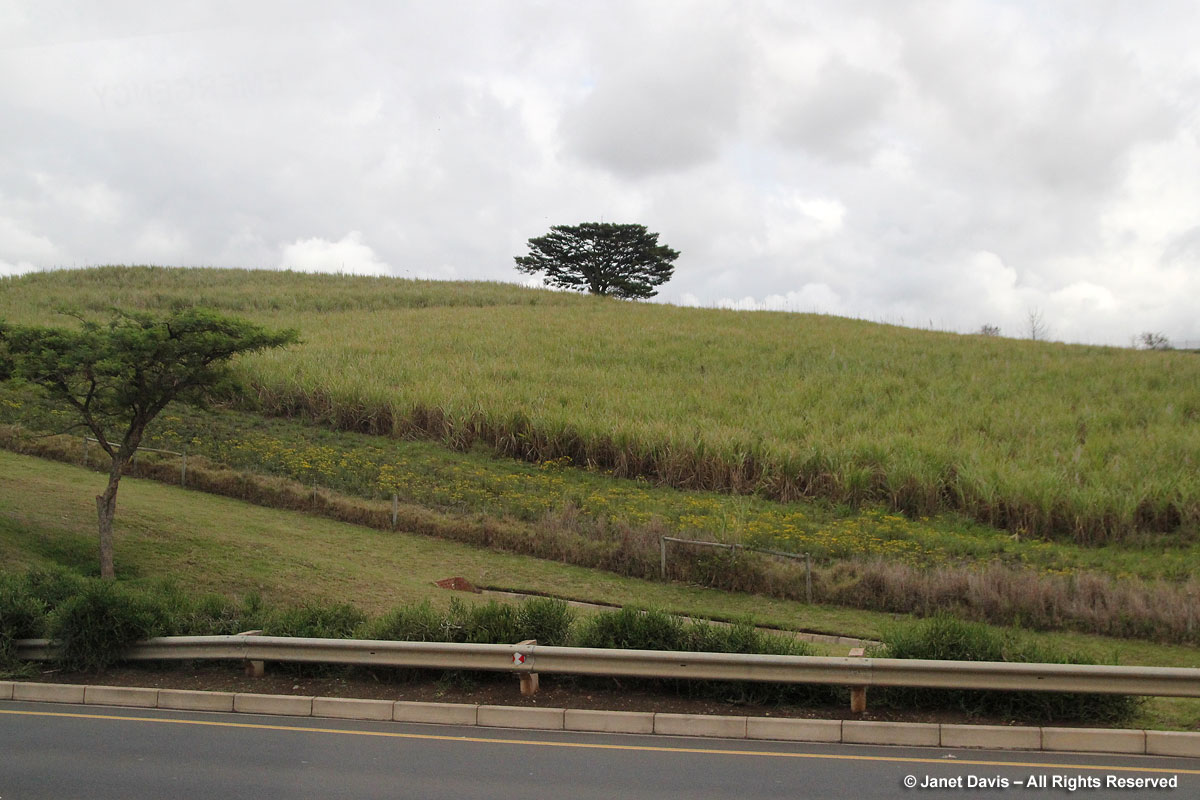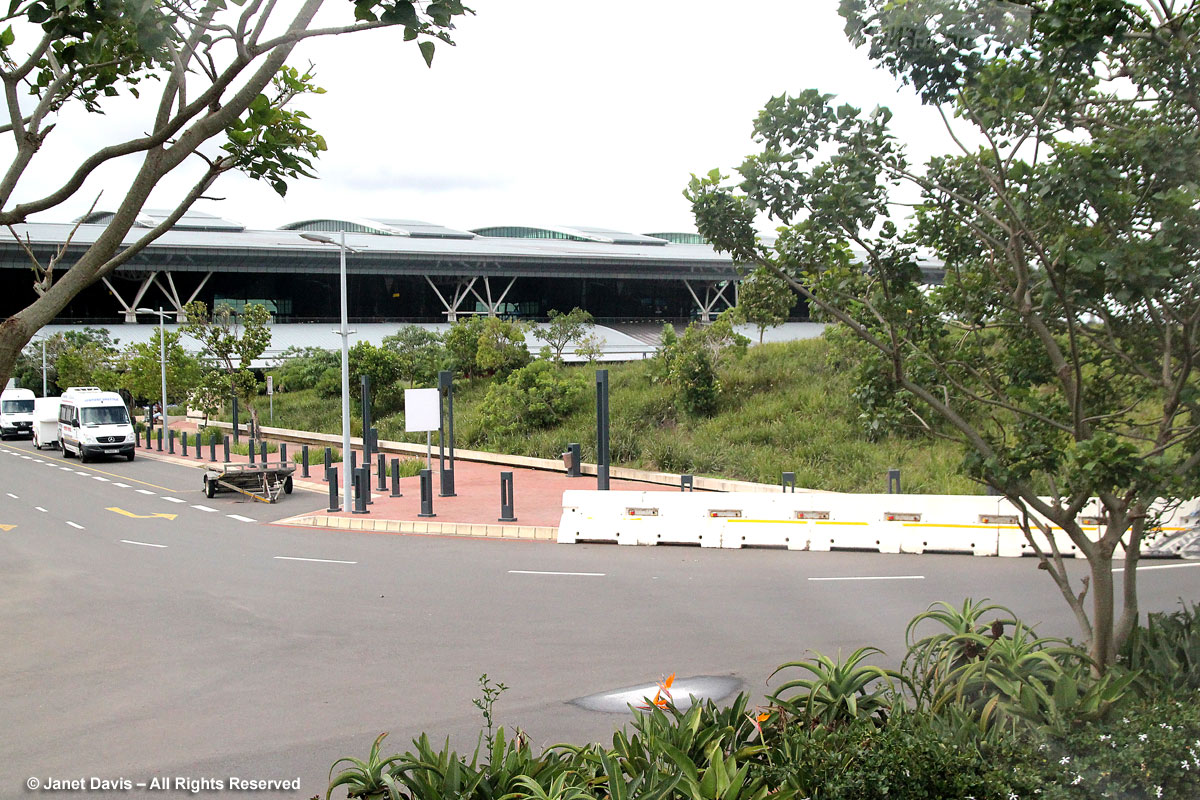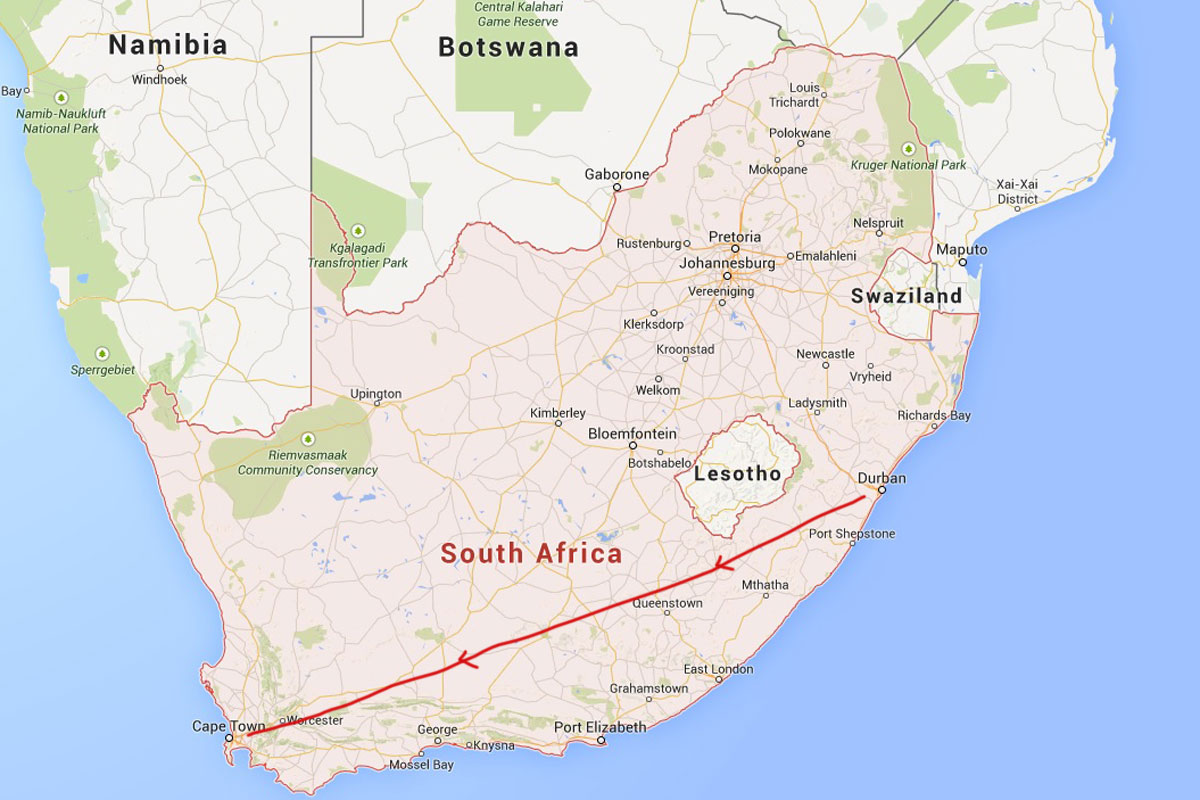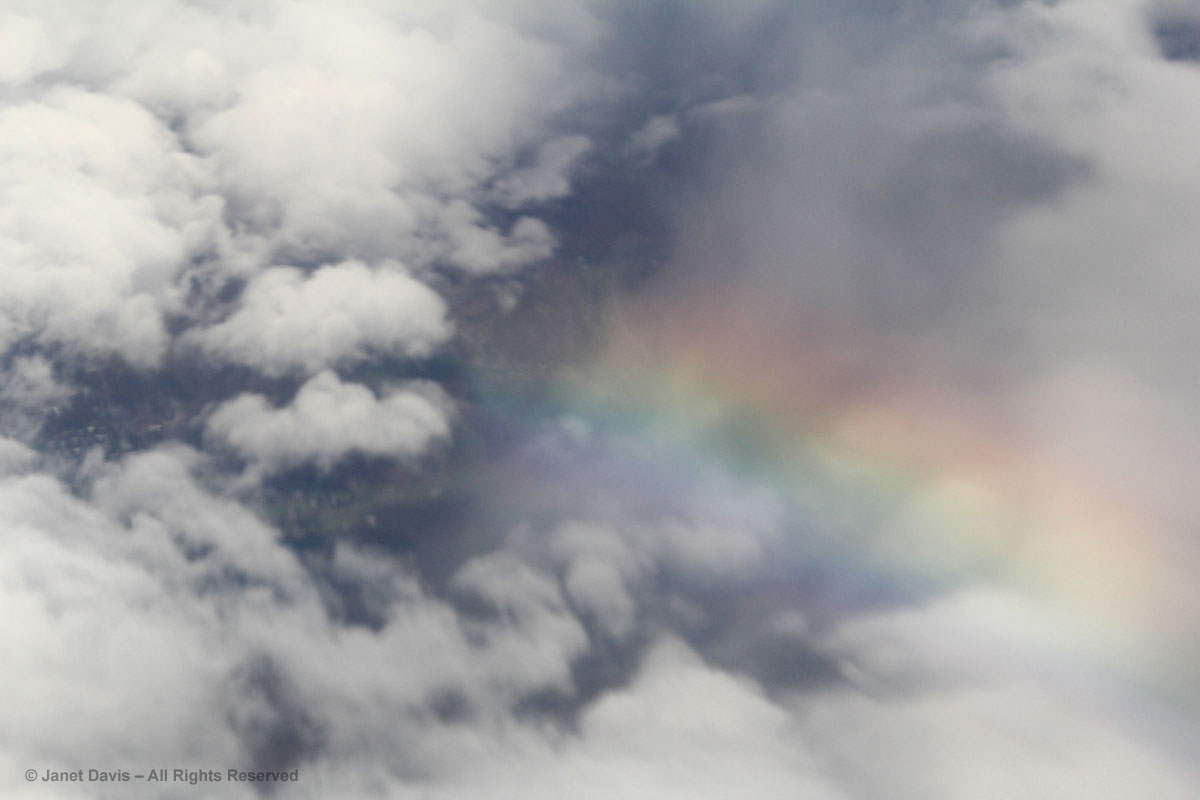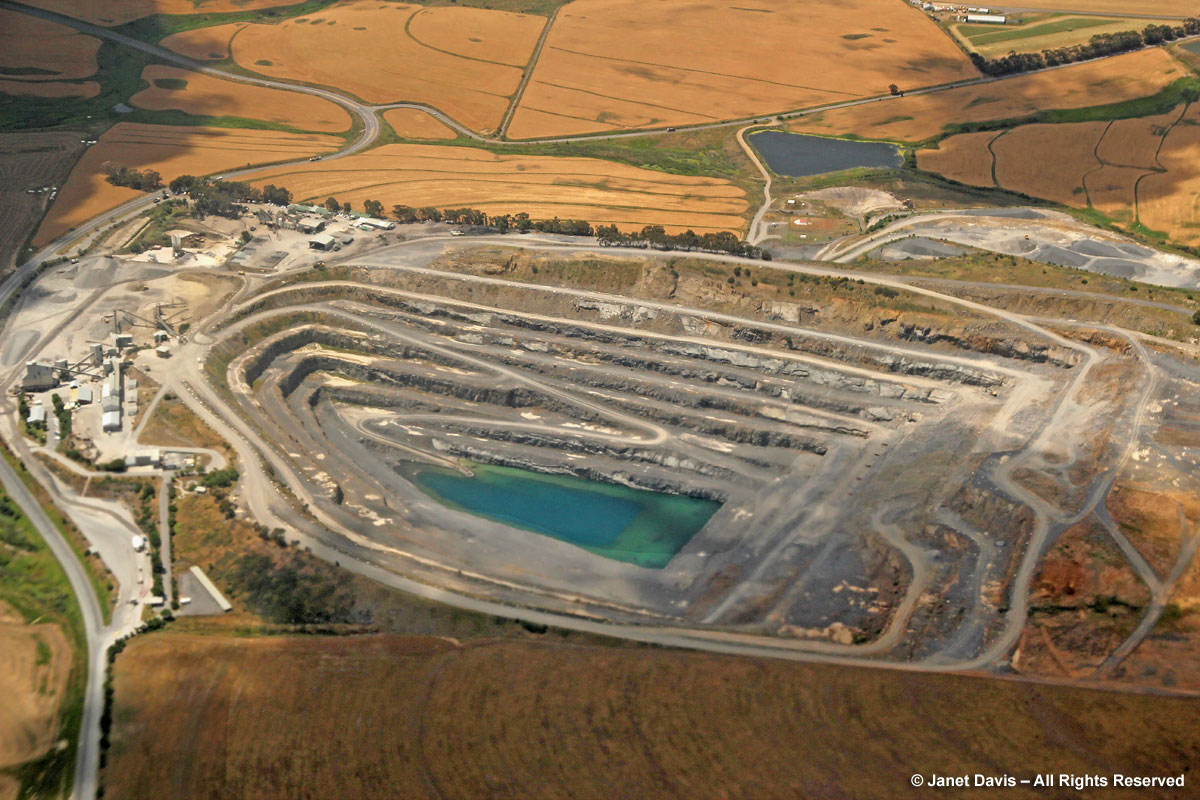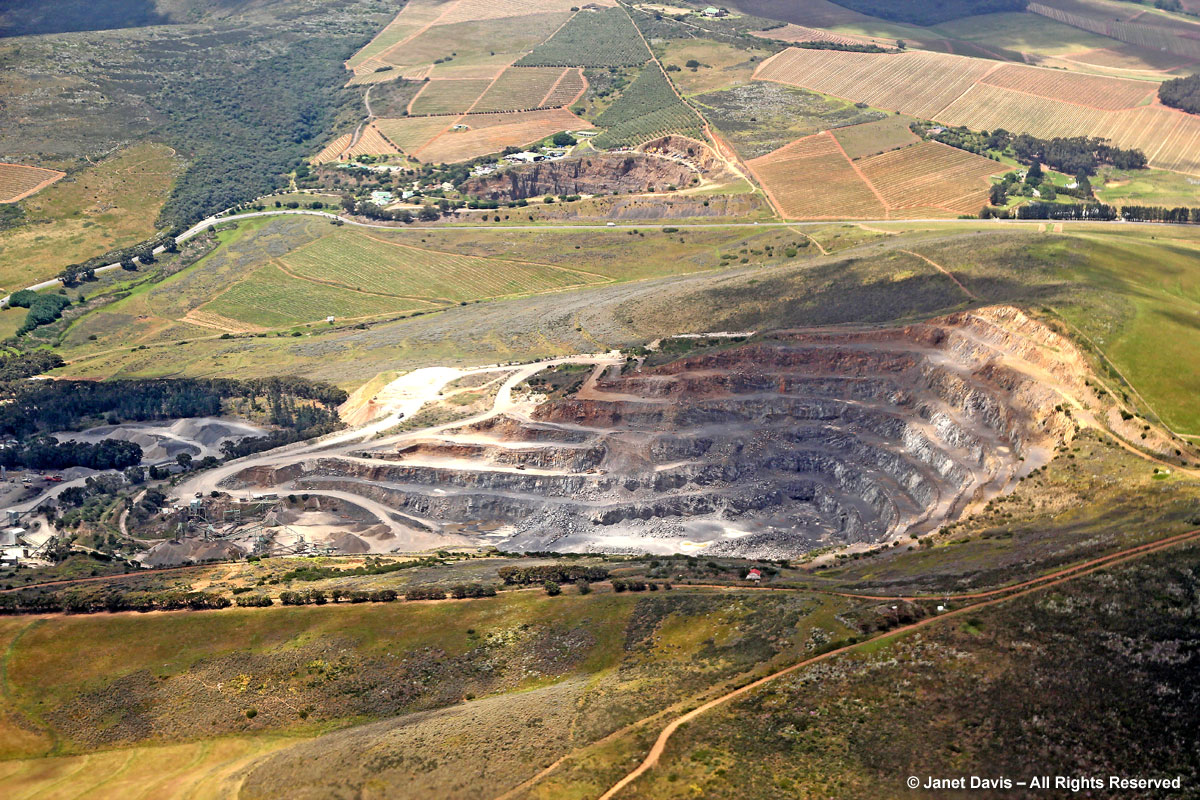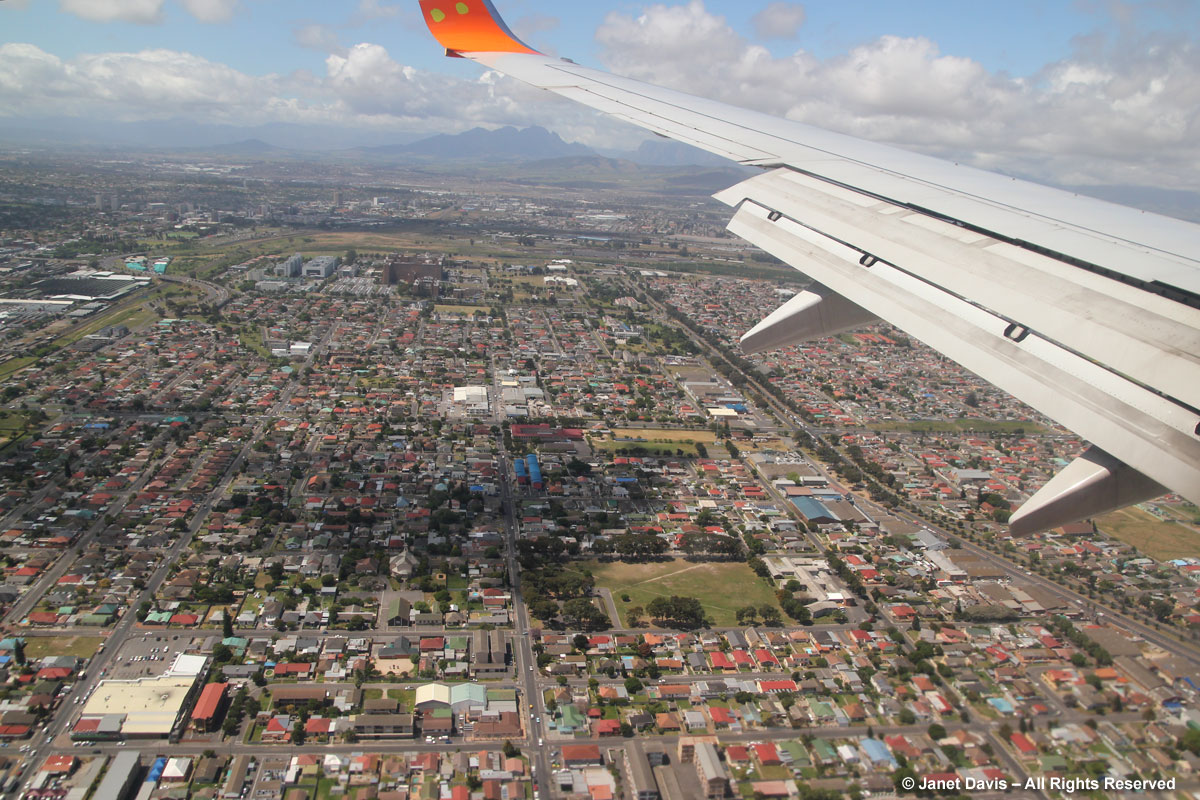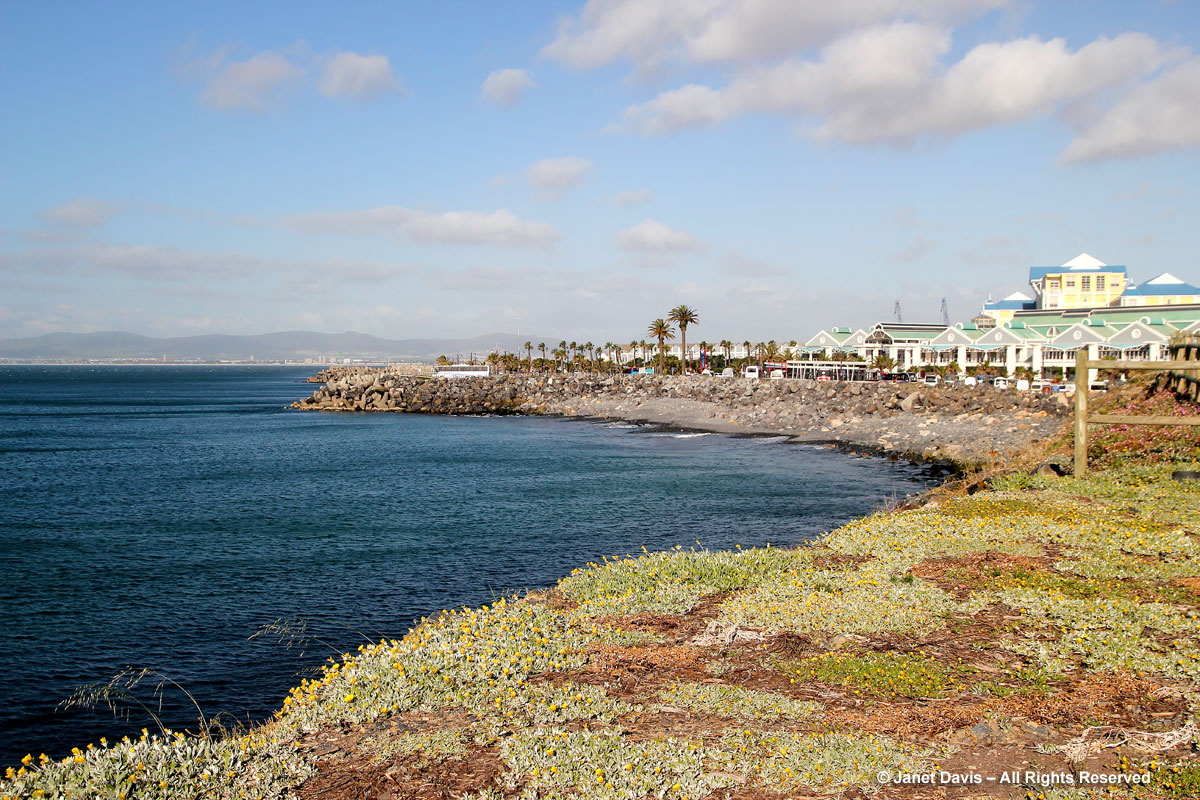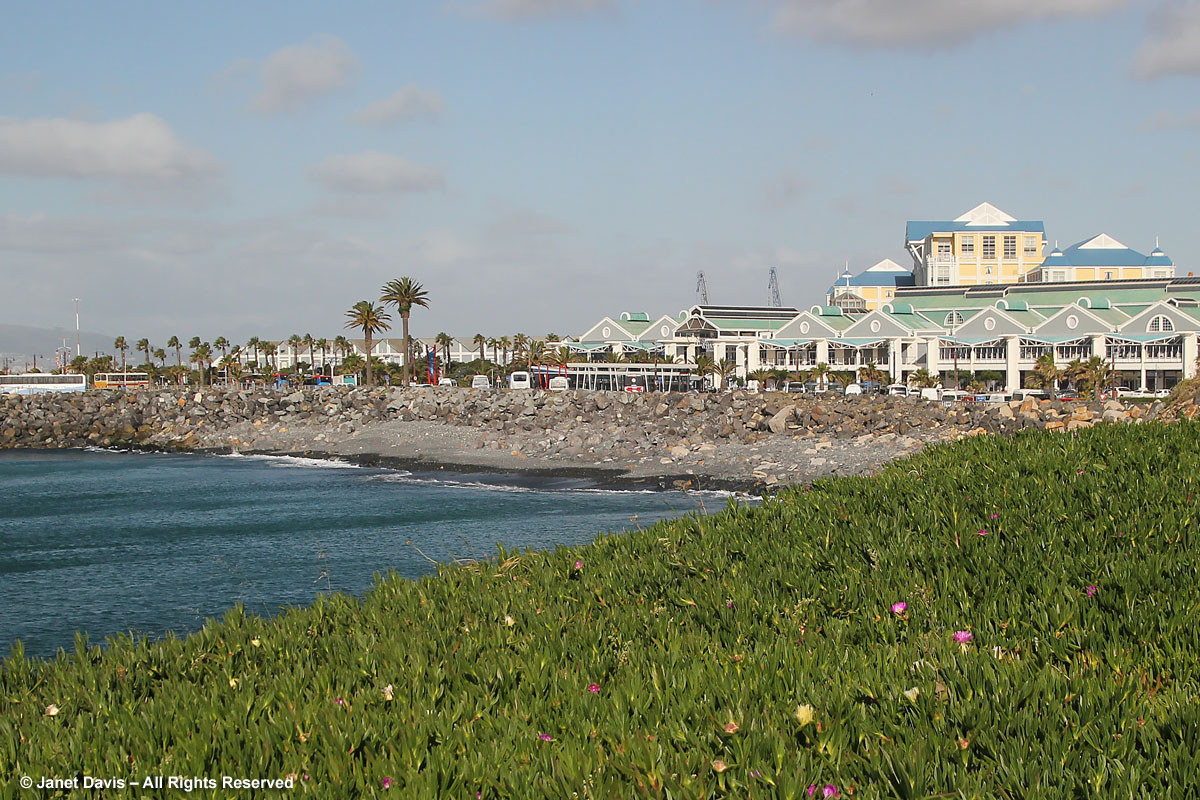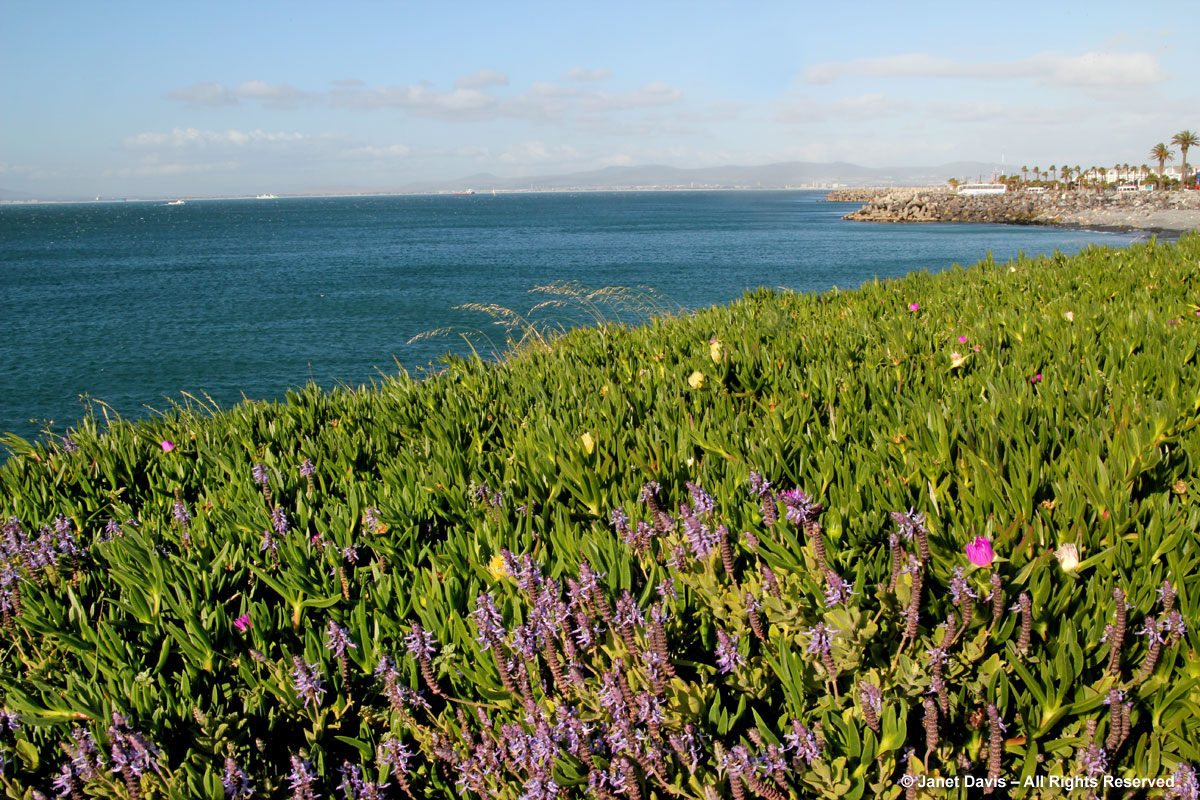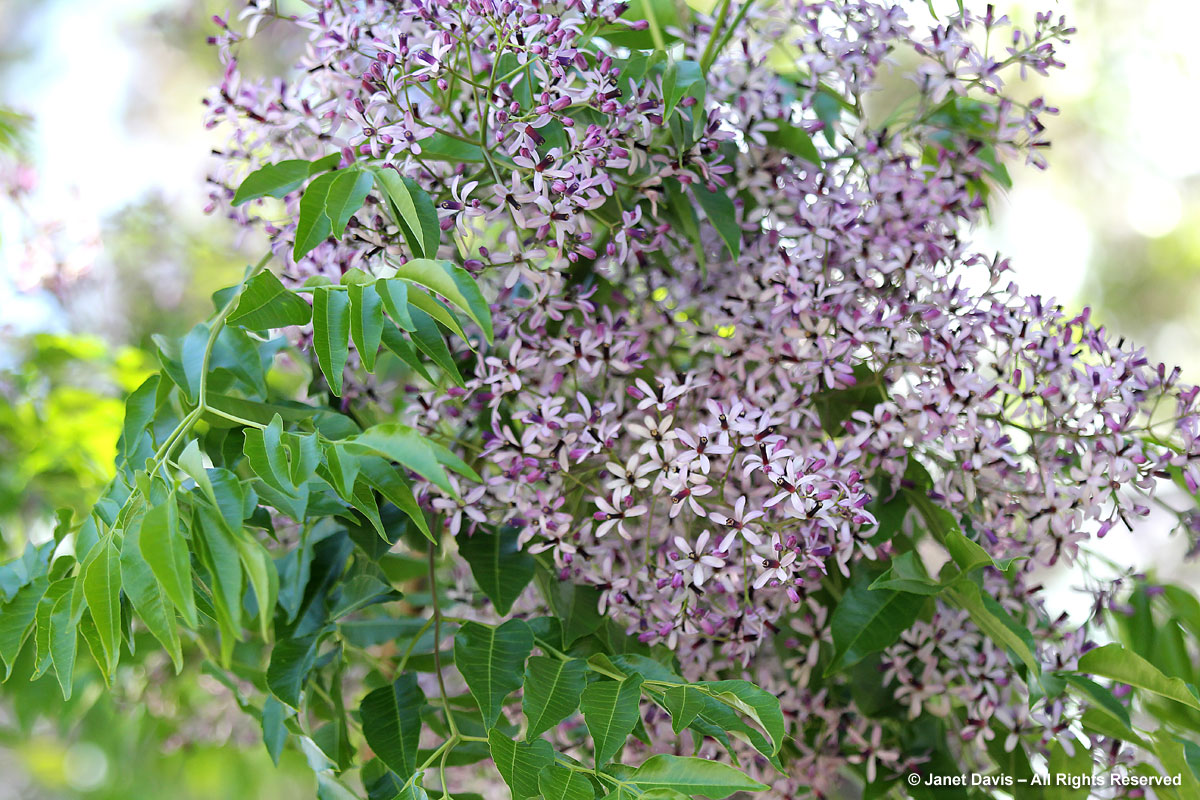It’s Day 7 of our South Africa Garden Tour, and we check out of our Durban hotel and drive to the airport. On the way, we pass myriad rolling hills planted with sugar cane, long an important crop in the Durban area, but one that relies on cheap labour to make South African sugar production highly competitive, relative to other sugar-producing countries.
As we arrive at the new King Shaka International airport, we’re greeted with parking lots planted with indigenous South African succulents, trees and shrubs. The plants were grown on here in polytunnels while the old airport was still in use; at the same time, alien exotic weeds were removed. That process led by Michael Hickman (aka Ecoman Durban) was an interesting one, and has a tie-in with his plan to rehabilitate the land currently grown to sugar cane near the airport.
We are soon flying out of Durban and settling into our seats for the 2-hour-10-minute flight to Cape Town. Our flight path will take us out of KwaZulu-Natal province over the Eastern Cape and finally into the Western Cape. Having arrived a week ago in Johannesburg (Gauteng province), Cape Town will be our home for the next week and the duration of the tour.
Whenever I look out of an airplane window at the fluffy clouds below, I think of Joni Mitchell’s famous song Both Sides Now. “I’ve looked at clouds from both sides now/From up and down and still somehow/It’s cloud illusions I recall/I really don’t know clouds at all”.
But flying across South Africa, another favourite song filled my mind, this one about African Skies. Here are Paul Simon & South Africa’s Miriam Makeba singing it at in 1987 during the Graceland Concert – perhaps my favourite duet ever.
As I gaze out my window I see something I’ve never seen from the air before: a rainbow, or maybe better described as a sundog. Seen from above, it seems to defy the standard physics explanation of sun and water droplets and the angle of the viewer’s eye. I have to focus quickly to get it before it fades.
As we approach Cape Town, I see an open-pit mine below, its massive maw ringed with a road and its tailing pond turquoise-blue in the centre.
Another open-pit mine.
Soon we are landing in Cape Town, population 3.74 million (2011).
After unpacking at our hotel, we head out on a late afternoon walk to the nearby Victoria & Albert (V&A) shopping mall. As usual, we miss the street we’re supposed to take and find ourselves at the seashore near Greenpoint Park. Over the tops of a succulent, yellow-flowered gazania, I can see the mall in the distance.
Just as well, we missed it – I don’t feel like shopping, anyway. We will go later in the week and have dinner there twice, but right now I’d rather be near the flora and the seashore. These South AFrican ice plants (Carpobrotus edulis), hated though they are in other parts of the world (California especially) where they have replaced the native seashore plants, would have been stunning a few hours earlier, but close their flowers in late afternoon.
And I love seeing the lavender-blue flowers of Plectranthus neochilus popping up among the succulents.
Walking home, we pass under a huge syringa tree (Melia azadarach). I’m thrilled to see this and focus my lens up into the mass of mauve flowers. Also called the chinaberry tree, it’s native to Southeast Asia and parts of the Middle East, but its invasive tendency is not what gives me pleasure, but rather its connection to one of the finest plays I’ve ever seen, the semi-biographical play The Syringa Tree, by writer Pamela Gien. Looking up, I recall the glimpses she gave of her childhood during apartheid in South Africa and imagine playing under the sweeping boughs of the tree. As we walk back to the hotel and an early dinner, I’m happy and excited for the next week.

